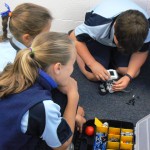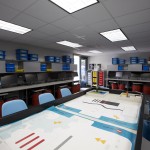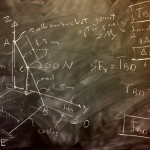This post is by guest contributor, Dr Tim Patston, Geelong Grammar School.
In January of this year I began my position as Coordinator of Creativity and Innovation at Geelong Grammar School. Here at Geelong Grammar we are looking to become a school that fosters creativity and innovation in students and teachers. The school has been on a journey to implement positive psychology and positive education over the past eight years. We see creativity as the next stage in the developmental journey of our organisation. I have been appointed to research and implement this shift. At this early stage of my reading it appears that creativity as a concept is being discussed in a range of fields in a variety of ways.
In the world of business there is a push to analysing creativity in entrepreneurship. There are an increasing number of books written about Steve Jobs and Apple or Mark Zuckerberg and Facebook. Many seek to look for the secret ingredients of creativity they used to become so successful. In the days of the high value start-up, people are searching for the next big thing, preferably one which can happen online. Books abound discussing Twitter, Uber, Wotif, Amazon, Candy Crush and other astonishing tales of the journey from zero to billionaire. It will be interesting to read this article in one year’s time and see which of these still exist, and what has come along in the meantime.
Meanwhile in another field, creativity is seen to be the domain of the engineer. As those who create novel solutions for complex problems, creative engineers take concepts and ideas and turn them into objects which we can use, from razor blades to power stations. On a global scale, corporations and nations strive to be leaders in their fields in increasing levels of scale, from supertankers to the A380 aircraft, to the Hadron Collider. Creativity is seen as an essential asset for engineers.
In the arts there appear to be two distinct types of creativity. One is the creativity needed to design and execute a new work, whether it be a painting, a sculpture or a musical. Secondly is the creativity required in the performing arts in order to bring a written or composed work to life. This type of creativity applies equally to directors and lighting designers as it does to performers.
While artists and engineers are making things, psychologists are trying to measure them. The world of psychology has a range of measures of creativity. Various types of creativity have been discussed – verbal, spatial, problem solving, divergent thinking. Measures of creativity range from simple questionnaires to complex questionnaires. New theories are being proposed, from a range of psychologists – cognitive, behavioural, organisational and developmental.
In the field of education, creativity appears to be in its infancy. There are many fundamental questions still being asked. Is there a creative type? Can anyone be creative? What is a creative teacher? What is a creative student? Can we and should we measure creativity? Can we and should we assess creativity?
Creativity is currently a buzzword in many fields. However as a term it lacks definitional consensus. I look forward to reading and researching in this field, not only for Geelong Grammar, but for the broader education sector. This is essential if we are to prepare our students for the flexible futures which await them.
Dr Tim Patston
tpatston@ggs.vic.edu.au
Coordinator of Creativity & Innovation
Geelong Grammar School
Guest Contributor
Latest posts by Guest Contributor (see all)
- Program Virtual Robots using Gears - 17 August 2020
- LEGO for the Blind: Touching the Untouchable - 29 November 2018
- What is creativity? - 4 June 2015


